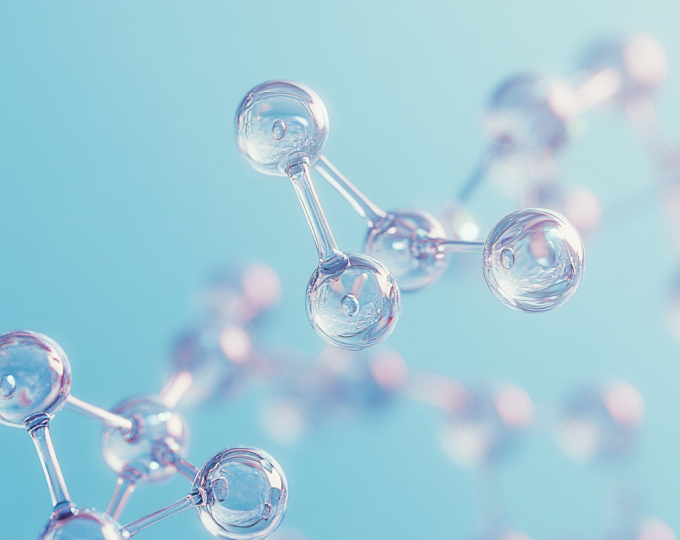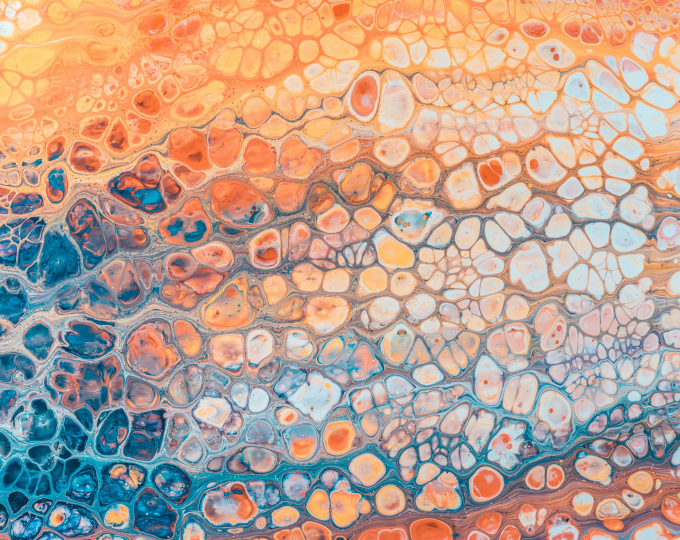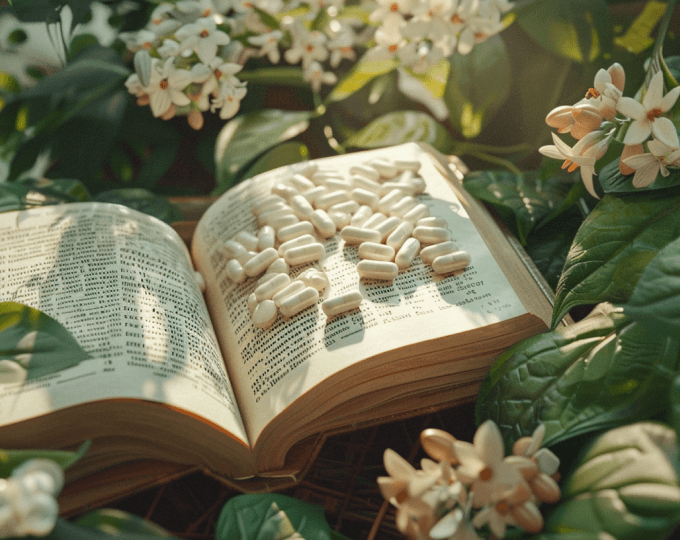Themen dieses Blogartikels:
Table of contents
- Definition: What are nucleotides?
- The role of nucleotides for DNA and RNA
- What functions do nucleotides have?
- cell division
- Protein synthesis
- Metabolism
- Are nucleotides essential?
- Are nucleotides found in food?
- Nucleotides as a dietary supplement
- What should be considered when taking nucleotides?
- Which nucleotide should I take?
- What factors need to be considered when uptake and utilizing free nucleotides?
- What is micronutrient therapy and what role do nucleotides play?
- Sources & Bibliography
Definition: What are nucleotides?
Nucleotides are neither vitamins nor minerals nor proteins. Rather, they consist of different components that form a unit. Each nucleotide contains a sugar molecule, one or more groups of phosphoric acid and an organic base - not to be confused with the word basic, which describes the pH value of a substance.
“Base” is a term for a structure. There are five different types of bases that determine which nucleotide it is:
- adenine
- thymine
- guanine
- cytosine
- Uracil
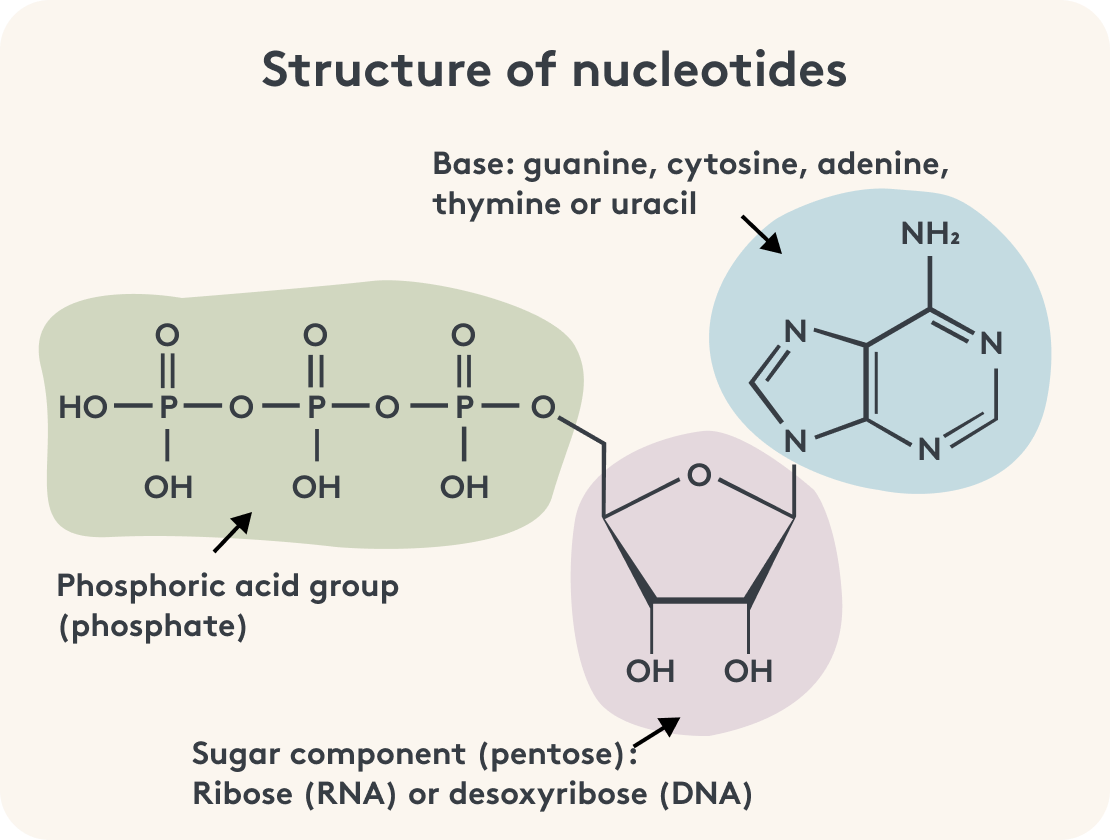

The Role of Nucleotides for DNA and RNA
Nucleotides can bond with each other and form a long chain. This happens, for example, in the cell nucleus, where they play an important role as building blocks of DNA and RNA.
DNA contains our genetic information for the formation of proteins, the functioning of metabolism and more. Every single cell contains a copy of the information in the form of DNA.
What functions do nucleotides have?
Nucleotides are involved in almost all metabolic reactions, cell division and protein synthesis and support cells in signal processing. The following processes, among others, would practically not function without nucleotides.
Cell division
For this process, the entire genome, i.e. the DNA, must first be duplicated. Since nucleotides are the basic building blocks of DNA, the cell division process requires a lot of them. About 6 billion, to be precise. Around 220 billion cells are exchanged every day - that's 2.5 million per second! We say exchanged, by the way, because old cells are broken down and new ones are created at the same time in order to maintain cell balance.
protein synthesis
Nucleotides are also relevant for cell growth and the construction of proteins. All information about the structure of proteins and enzymes is encoded in DNA. In order for the DNA blueprint to be available for protein biosynthesis, it must be copied. This is because DNA cannot simply leave the cell nucleus. This would make it vulnerable to attack.
To protect the DNA and regulate protein synthesis, a copy of a part of the DNA is created - the RNA. This small DNA copy can leave the cell nucleus and migrate to the site of protein synthesis, the ribosome. This protein factory of the cell consists of nucleotides, just like the nucleic acids DNA and RNA.
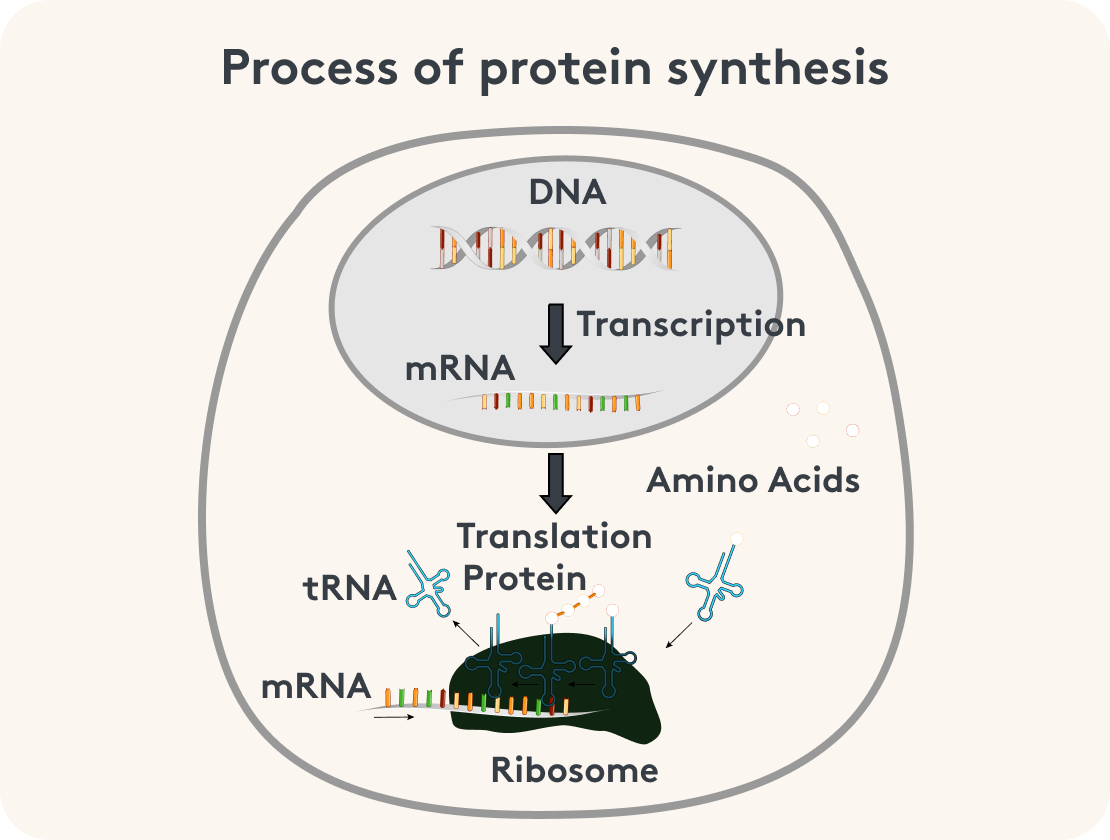

metabolism
Almost all metabolic reactions require energy, which is mostly produced in the mitochondria . This is where nutrients are broken down and the resulting energy is transferred to the ATP molecule. ATP is the universal energy carrier of our cells. When we need energy within our metabolism, it is split and the energy is released so that the desired reaction can take place.
Good to know: ATP stands for adenosine triphosphate and is a nucleotide. Adenosine stands for sugar and the base adenine, and triphosphate means that three phosphate groups are attached to the nucleotide.
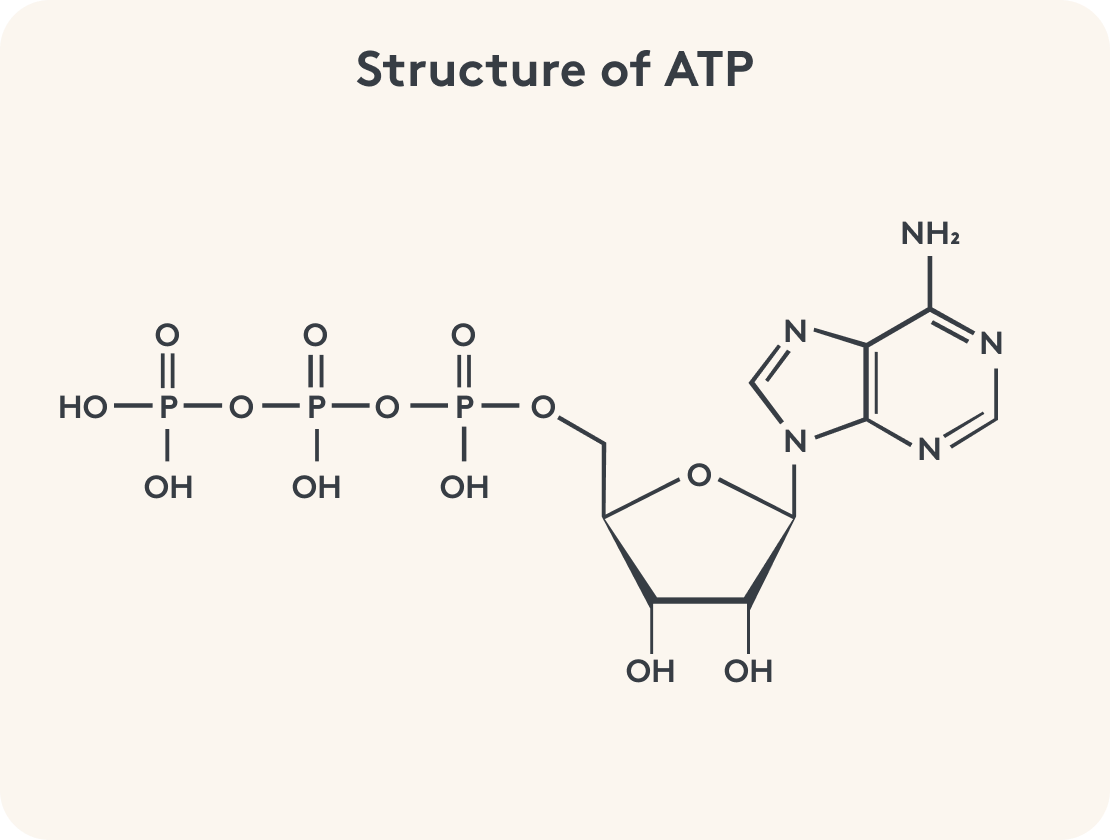

Are nucleotides essential?
Nucleotides are not essential because your body can theoretically produce them itself. Nutrients, energy and electrons are required for synthesis. More specifically:
- Some essential nutrients, especially the bioactive form of vitamins B9 and B12
- Energy in the form of eight to twelve ATP molecules
- Some electrons, which are also involved in reactions to protect against oxidation
In order to produce a nucleotide, the cell must invest substances that may not be available at the time. During periods of greater physical exertion during growth phases, when building muscle or when fighting diseases, the need for nucleotides can increase - but the availability of the raw materials decreases due to demand elsewhere.
A lack of substances for nucleotide production reduces the supply of nucleotides and can impair cell growth and division and - almost worse - lead to lower ATP production and thus a lack of energy. Less ATP means fewer nucleotides.
This brings us full circle: if nucleotides are missing, it is no use having enough vitamins in stock. If the production of nucleotides is complex and the body needs more nucleotides during times of greater exertion - but at the same time there is less energy and vitamins available - there is only one thing we can do: supply nucleotides.
You will find out what all this has to do with micronutrient therapy at the end of the article.
Are nucleotides found in food?
How can you ensure that enough nucleotides are available? The fact is: Foods contain a certain amount of nucleotides, but this varies greatly.¹
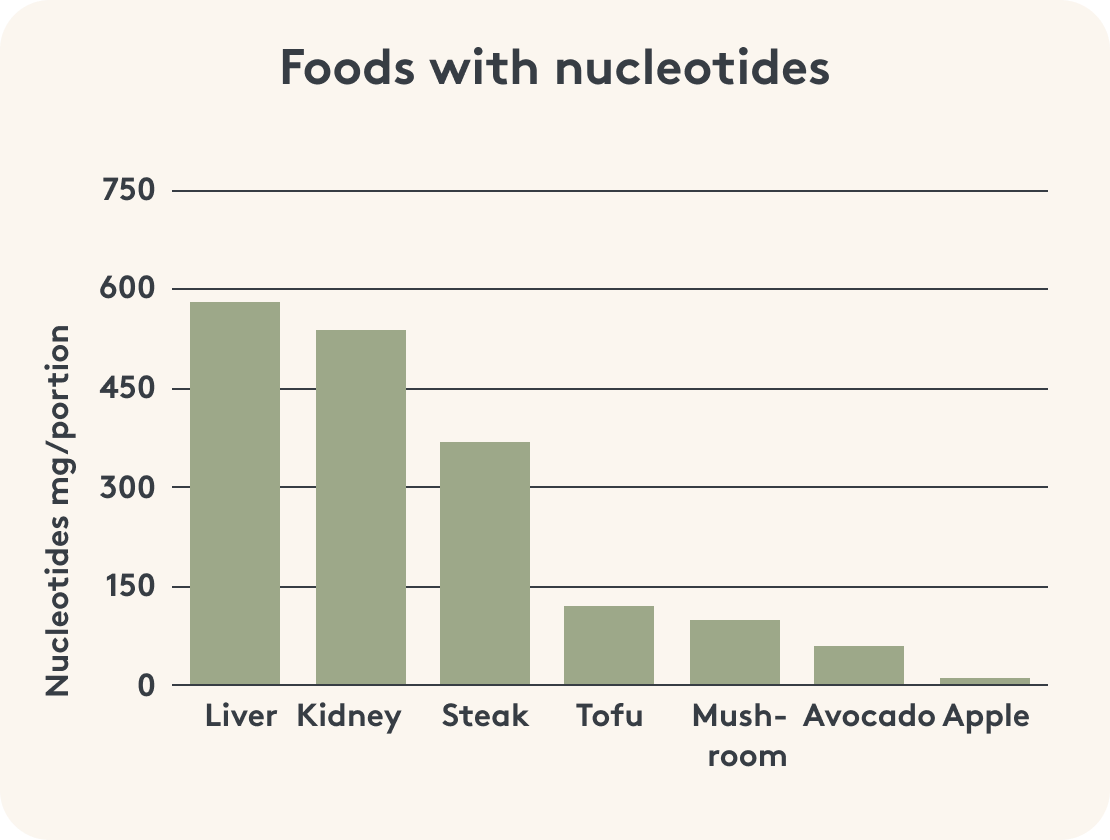

With our current diet, it is difficult or impossible to obtain the majority of nucleotides through food. Internal organs contain many nucleotides, but they are rarely found on menus and are not suitable for vegetarian and vegan lifestyles.
In addition, some of the nutrients are lost when meat or vegetables are cooked, and nucleotides ingested through food must first be obtained through complicated processes.
Especially in demanding phases of life, we believe it is possible, but not sensible, to cover the nucleotide requirement through food. This is due, among other things, to the poor absorption of food-bound nucleotides. However, there is a way to obtain nucleotides more easily.
Nucleotides as a dietary supplement
Nucleotides can be taken in via dietary supplements, i.e. in capsule or powder form. This circumvents barriers to nucleotide absorption in other ways. The complicated cleavage process to obtain nucleotides is skipped.
Instead, free nucleotides are used to increase absorption. In addition, the diet can be based on other factors rather than nucleotide content. The focus can be more on a balanced diet rich in micronutrients
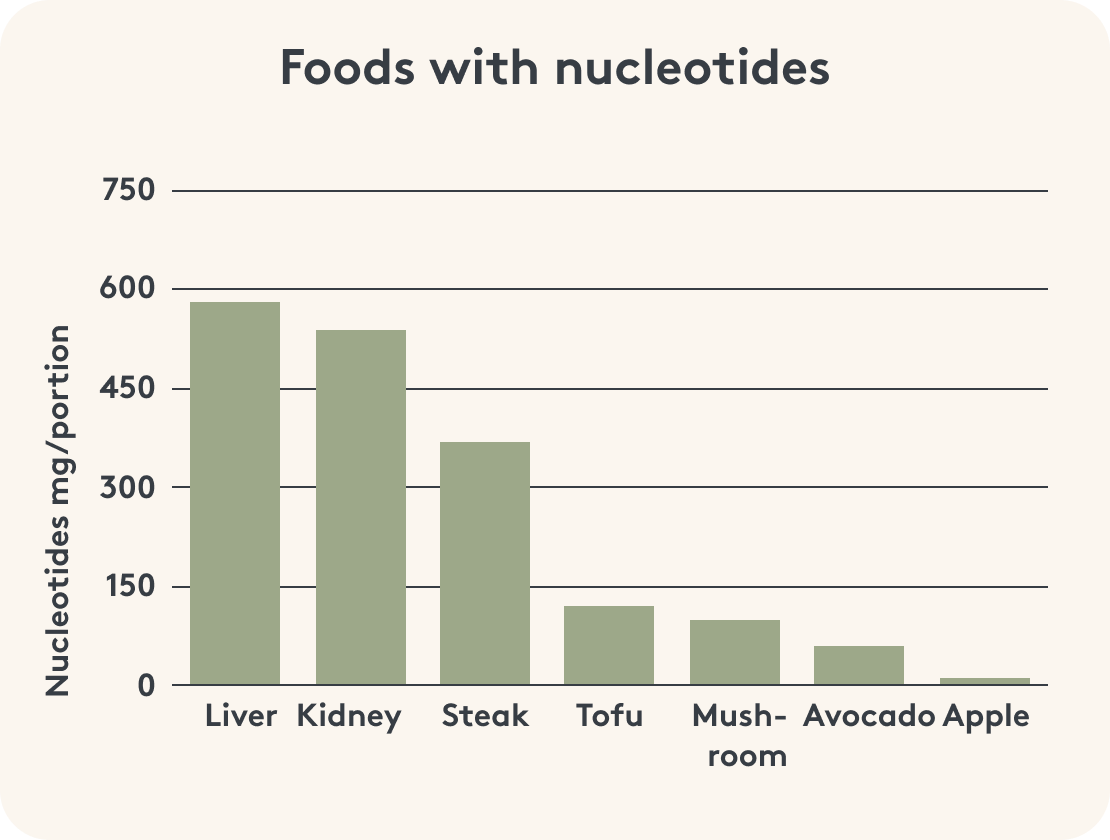

What should be considered when taking nucleotides?
Nucleotides are an important building block for your well-being. Are you thinking about supplementing? Then let's clarify the two most important questions.
Which nucleotide should I take?
There are four different DNA nucleotides with four bases. There are also nucleotides of protein synthesis (RNA nucleotides), which differ from DNA nucleotides in the sugar used and in two bases, of which there are the five mentioned at the beginning.
It makes more sense to focus on RNA nucleotides, as these can easily be converted into DNA nucleotides and also contain the fifth base inosine, which is used in protein synthesis. Another advantage: RNA nucleotides are available in vegan form, for example as an extract from yeast.
What factors need to be considered when uptake and utilizing free nucleotides?
In the context of cell division and cell growth, zinc plays a crucial role: it is an important component of various metabolic enzymes. An enzyme for nucleotide synthesis, for example, is zinc-dependent. Studies suggest a direct influence of zinc on DNA synthesis. Furthermore, growth signaling pathways are also dependent on the zinc concentration.²
Other factors in cell division and nucleotide metabolism are B vitamins such as biotin, vitamin B6 and B12, riboflavin and niacin. This is mainly due to their involvement in cell growth processes. Biotin, for example, is an important co-factor and regulator of many metabolic enzymes and is therefore essential for energy production and the building (anabolic) reactions.
Biotin is also relevant in the gene regulation of enzymes.³ Cell division and growth are closely linked. In the regulation of the cell cycle, functioning growth is a prerequisite for cell division. If growth is already disrupted, no division occurs.
The supply of nucleotides while simultaneously ensuring the co-factors for growth and nucleotide metabolism are crucial for healthy cells – and thus for flawless micronutrient therapy.²
What is micronutrient therapy and what role do nucleotides play?
Micronutrient therapy is a part of nutritional medicine and aims to supply the body with the necessary micronutrients. In micronutrient therapy, it is assumed that micronutrients form the lowest level and thus the basic building block for all other metabolic processes and physiological control circuits.
In addition to macronutrients (proteins, carbohydrates, fats), micronutrients are necessary so that the known nutrients can be produced, processed, used and broken down in the first place. However, nucleotides are overshadowed by micro and macronutrients. We go out on a limb and say that this is a mistake. Because if we want to use micronutrients properly and effectively, we need other substances.
This article is based on carefully researched sources:
Sources & Bibliography
- pro-bio.ch/de/the-science/the-need-for-dietary-nucleotides (graphic)
- Ruth S. MacDonald, The Role of Zinc in Growth and Cell Proliferation, The Journal of Nutrition, Volume 130, Issue 5, May 2000, Pages 1500S–1508S,
- Dakshinamurti K. (2005). Biotin--a regulator of gene expression. The Journal of nutritional biochemistry, 16(7), 419-423.




